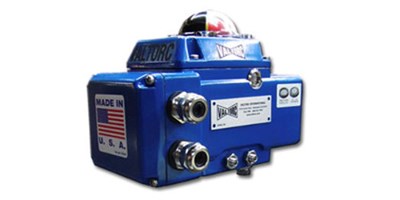The new explosion proof, series EL-XP9000 electric actuator is a sophisticated solution for hazardous environments that require explosion proof valve control. The actuator’s robust construction, reliable performance, and ability to fully integrate into sophisticated control systems makes it a solution the industry will appreciate.
The EL-XP9000 series explosion proof actuators are compact, powerful, CE and NEMA approved and available in types 4, 4X, and 7.
The special features include: All exterior bolts are made of stainless steel to prevent rusting; Enclosure utilizes radial seals and O-rings which provide protection for waterproof IP67 (NEMA 4 & 6) and elective watertight IP68; A dependable mechanical torque sensing system that provides safe functionality in overload conditions; Standard torque switches; Uniquely designed class F induction motor to produce high starting torque and efficiency, designed with thermal protector to safeguard against overheating damage.
The options are: Watertight IP68 enclosure actuator; Potentiometer unit; Self-locking feature provided by double worm gearing that maintains the valve’s position; High resolution proportional control unit along with 450 points of resolution (4-20mA/0-10VDC/ 1-5VDC/2-10VDC Input/Output); Extension 120°, 135°, 180°, 270° turn; Position transmitter (output 0-10VDC or 4-20mA); Torque switches that protect the actuator from damage resulting from overload from the driven valve, throughout the whole travel; Limit switches directly connected with output shaft for accurate valve position; Optional added limit switches; Terminal strip, push type, spring loaded terminal that produces a tight wiring connection that can handle severe vibrations; Manual override via a manual/auto switchable lever and handwheel interaction to handle emergency manual operation; Drive force that is automatically resorted using a motor start, except in cases where the lever is padlocked to prevent this from occurring and Optional high-resolution proportional control unit that has 450 points of resolution.


